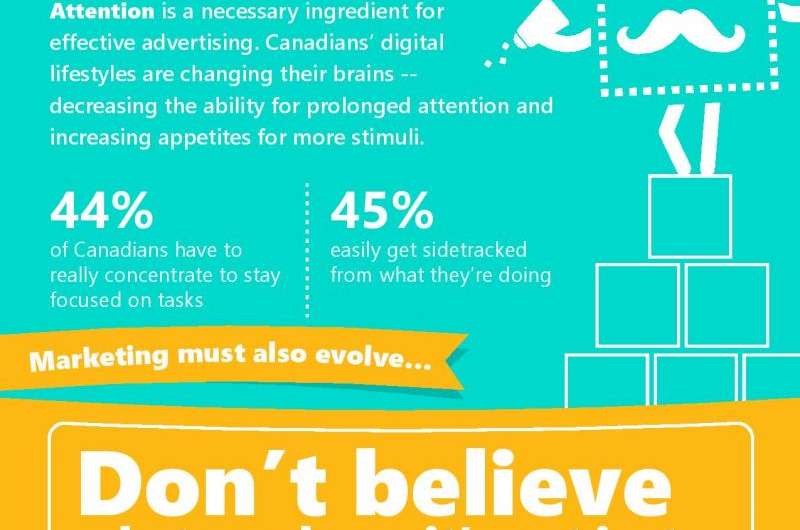May 15, 2015 report
Microsoft study claims human attention span now lags behind goldfish

(Medical Xpress)—Microsoft has conducted a study aimed at learning how modern technology is impacting the attention span of people who use it. They have published their results on their own website, and claim also that they have used Sohlberg and Mateer's model of attention, which allows for providing a timed result. As part of their study, they note that there are three types of human attention: sustained (prolonged focus), selective (maintaining focus despite distractions) and alternating (shifting attention between tasks or stimuli). The study consisted of surveying 200 people and administering EEG scans to 112 volunteers.
The study was conducted in Canada and its main goal was to determine the impact of modern digital technology devices on attention spans as it relates to advertised material presented on various media.
The surveys consisted of asking questions and asking people to play games that have been designed to measure attention span while allowing for metrics to be taken. Respondent surveys that were returned were separated into three categories: high, medium and low attention span. The EEG scans were administered while volunteers watched different types of media and engaged in various activities—both to note when attention wandered from one subject to another.
In analyzing the data obtained, the researchers found that the average attention span for the respondents and volunteers was just eight seconds, down from twelve back in 2000, and one second shorter than the average goldfish. They also found that using digital devices has caused an improvement in multi-tasking skills.
They researchers also found that those volunteers who used their digital devices more than others, tended to have more trouble focusing in situations where it was required to function. They also noted that early adopters or users who have used digital devices quite heavily have learned over time to front-load their attention, allowing large amounts of information to flow in and to be processed, before switching their focus to something else, resulting in an increase in bursts of high attention. The researchers suggest this means they are better at determining what information they want to focus on and which to ignore.
On the other hand, the researchers also found that users that tend to use multiple screens (such as using their phones while watching TV on another screen) tend to have difficulty with filtering information that is coming at them on any of their devices. They suggest that overall our brains are adapting to the new technology as it develops and a shorter attention span may simply be a normal side effect.

© 2015 Medical Xpress




















